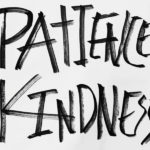Calm also has a coefficient
Panic loves company.
And yet calm is our practical, efficient, rational alternative.
If you’re on a crowded plane and one person is freaking out about turbulence, the panic will eventually peter out. If, on the other hand, six people are freaking out, it’s entirely possible that it will spread and overtake the rest of the plane. Panic needs multiple nodes to spread.
The same is true with a cabin of 10-year-olds at summer camp. One homesick kid usually comes around and ends up enjoying the summer, because being surrounded by others who are okay makes us okay. But three or four homesick kids can change the entire dynamic.
While calm is a damping agent, it’s not nearly as effective at spreading itself as panic is.
The library is usually a quiet place because the dominant cultural narrative in the library is to be quiet. Because it’s dominant, the coefficient of its spread is sufficient to keep it that way. We have to expend effort to create environments of calm, because calm has a coefficient that can’t compete with panic when it comes to spreading.
And Twitter? Twitter has been engineered to maximize panic. Calm is penalized, panic is amplified. And if you are hanging out in real life with people who spend a lot of time on social media and news sites, you’ve invited all of those people into your circle as well.
We can find lots of reasons why fifty years of watching just three dominant TV networks wasn’t ideal. But the combination of oligopoly and the FCC meant that none of them spread panic. They weren’t built for it. When cable “news” showed up, they discovered that panic was a great way to make a profit. Not to make things better, simply to spread anger and fear.
If panic is helpful, of course you should bring it on. But it rarely is.
Instead:
Curate your incoming.
Stay off Twitter.
Do the work instead. Whatever needs doing most is better than panic.
Being up-to-date on the news is a trap and a scam. Five minutes a day is all you need.






























